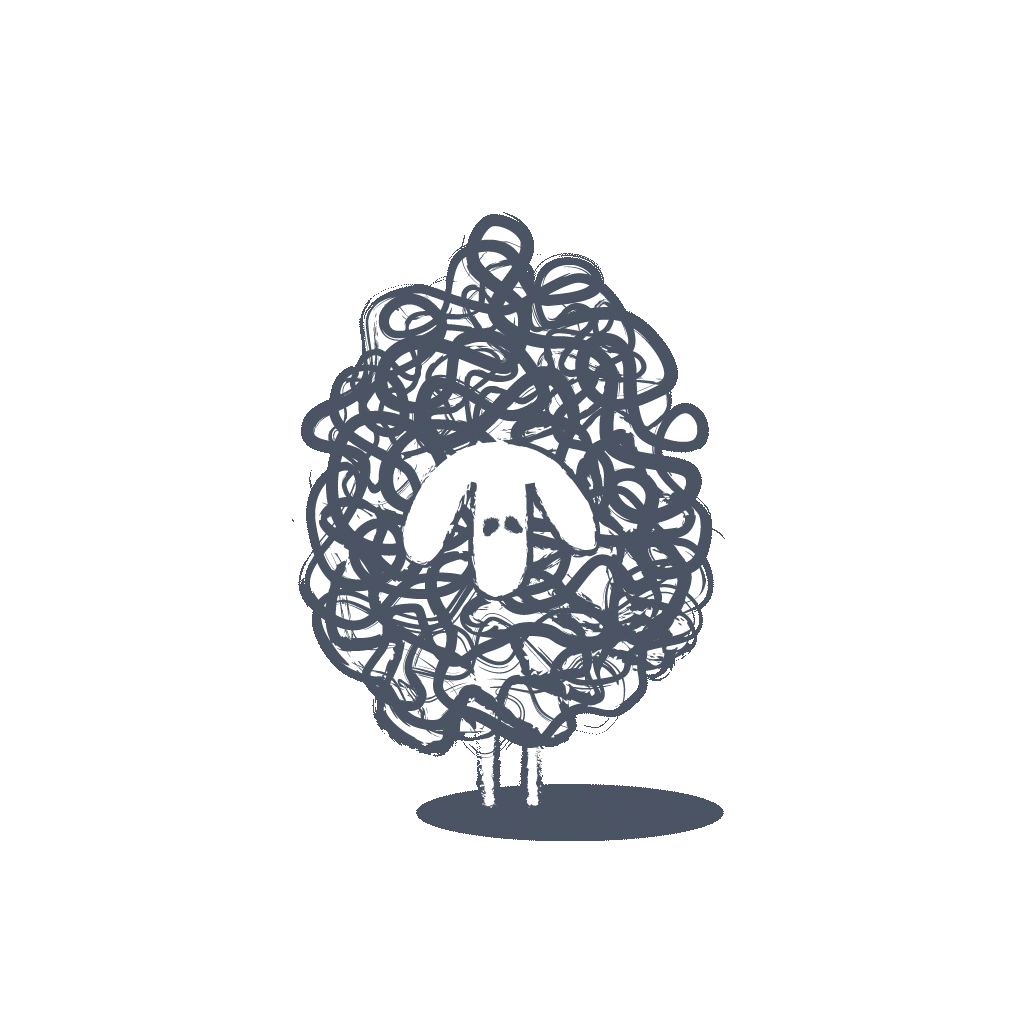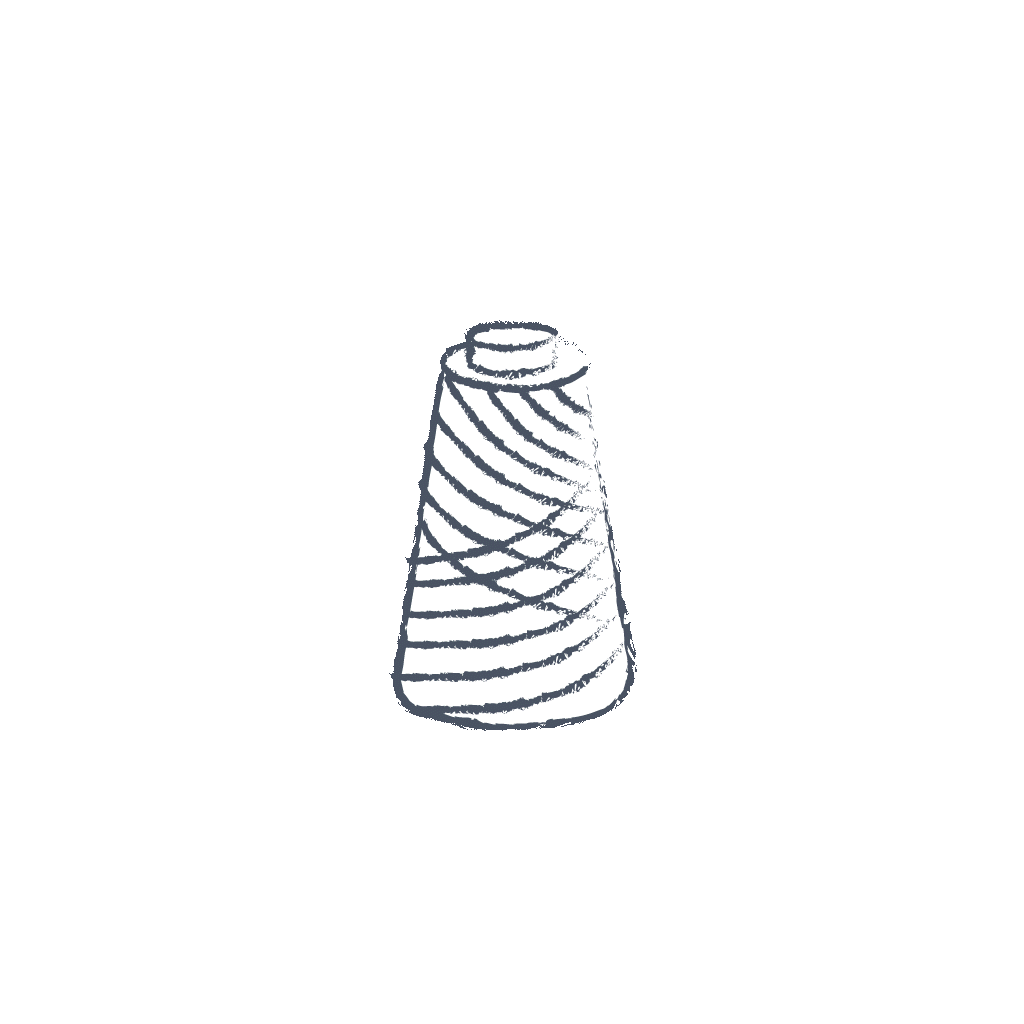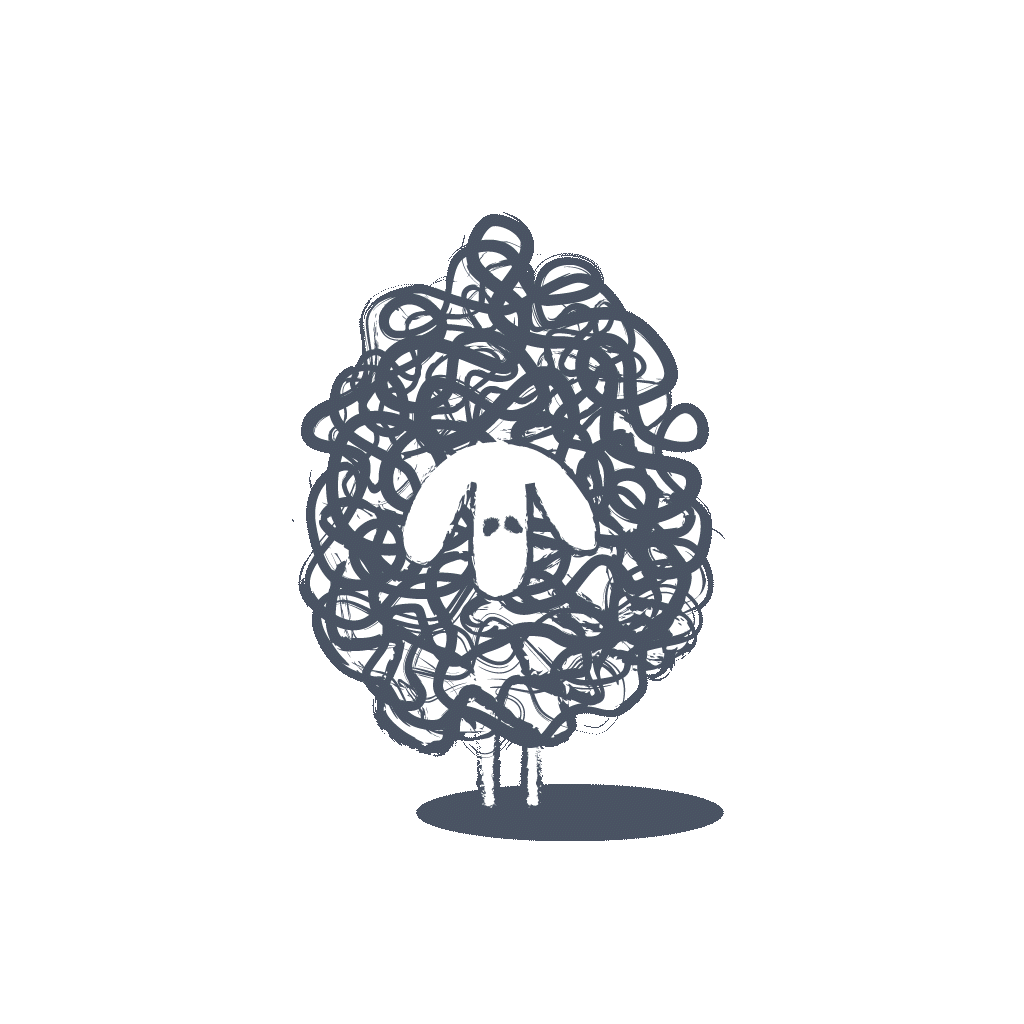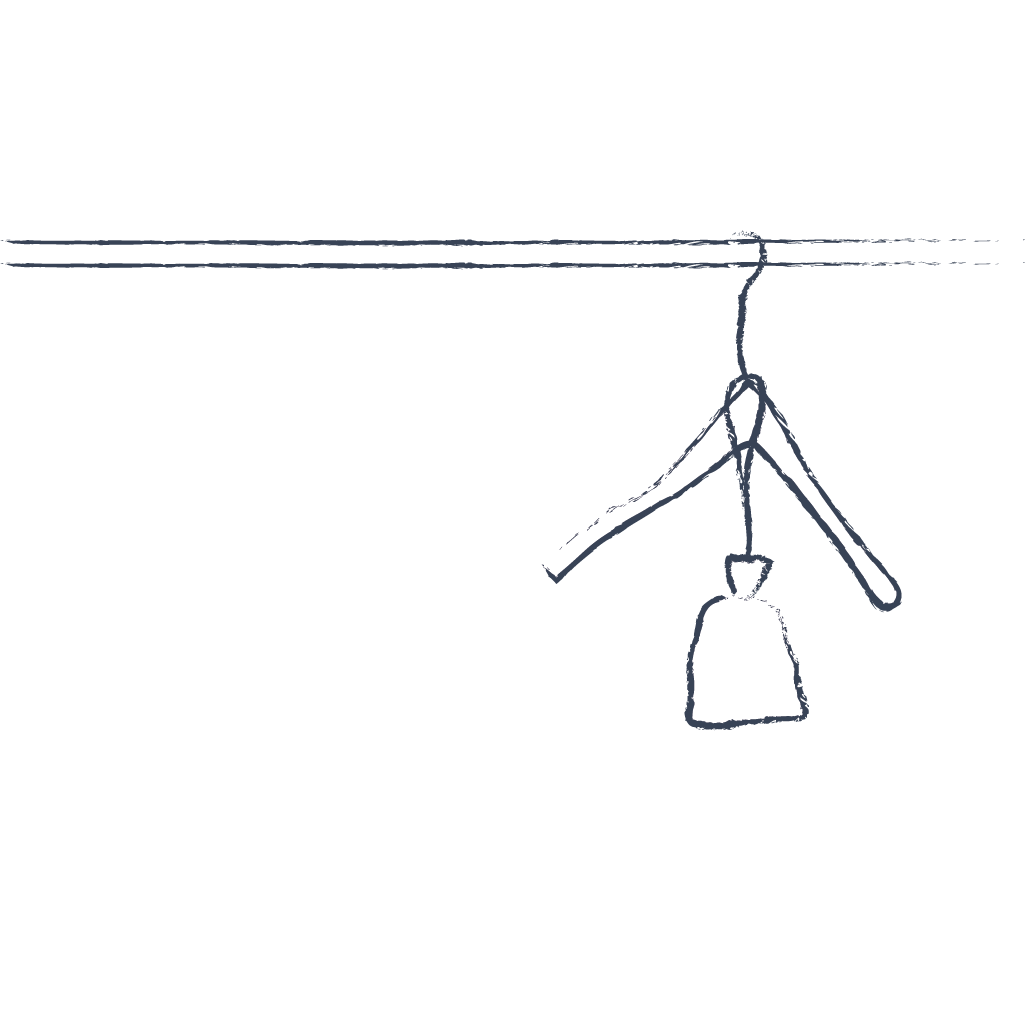ONE SHEEP FOR A LIFETIME
|
Määääh!
Our website is not yet responsive but we are working on it.
Please use at least a Full HD Screen
Our website is not yet responsive but we are working on it.
Please use at least a Full HD Screen
They got sacrificed and worshipped, they fed and warmed us, and they could still do! Though in modern societies sheep have lost a lot of appreciation. In an era of Fast Fashion, with cheap materials like cotton and petroleum at hand, sheep are mostly valued for their meat. It‘s bizarre! A great amount of the sheep’s wool in Europe goes to waste while the production of polyester fibres is anticipated to triple until 2050. Let‘s bring sheep’s wool back into our fashion narratives!
Imagine you and your seven fellows would be responsible for one sheep throughout its lifetime. Or would the sheep rather be responsible for your group of eight? To live a decent life as a sheep you have to be sheared once or twice a year, so you don‘t get too hot and also can safely give birth to your lambs without any excess wool being in the way. Depending on the breed of sheep, the wool of one time shearing weighs about 4,5 kg. All the dirt and poop removed we end up with about 4 kg, which means 8 kg of wool a year. But wait: that would mean only 1 kg of wool per year! That‘s right, 1 kg of wool to start with, adding up to 18kg when you graduate school, and to 65 kg when retiring. Of course you will also lose a bit of material on the way, but even 50 kg is quite a full closet.
Wool fibres are one of the most amazing materials on the planet. What works as a coat for the sheep works also for us. Wool is a fantastic insulator. The sheep's hair keeps you warm in winter and cools you off in summer. Before the rise of synthetic fibres, it was even used for sportswear. Also wool doesn’t stink! The fibres are naturally antimicrobial, which helps reduce the growth of smelly bacteria in garments. Like our human hair wool is a vital material, it's alive! In the Dare to Care section of the journey you can learn how to care for sheep’s wool clothing properly.
Most of the clothes we wear are based on fibres, that are spun into yarn and then processed into a surface we call in the end “fabric”. There are a hundred ways to turn sheep wool into fabric. But the most amazing form is by interlacing yarn loops with loops of the same or other yarn… KNITTING! Knitting bears the potential to completely eliminate leftover waste material in the production process. If the fabric is knitted in one continuous yarn, the wool can even be recovered easily. If you only have a limited amount of wool to dress yourself with over the course of your lifetime the technology of knitting can bring us closer to a circular way of manufacturing. By simply unravelling unused items the precious yarn can be transformed into something new by reknitting it. This way the resource will sustain through several product life cycles.
The Sheep’s Wool Simulator allows you to simulate the potential garment possibilities with only 1000 grams of sheep’s wool. You can be creative in your personal expression while using only this limited amount of material for your desired pieces. It reverses a known principle: A specific amount of sheep’s wool becomes the basis for instead of the result of creation. Design follows resources!
By knowing about the material qualities of your present and future clothes you can contribute to extending their life span and will maybe even save some water along the way.
If your clothes will last also depends on how you treat them. In a way you have shared responsibility with the designer.
In her book "Loved clothes last" Orsola de Castro describes many strategies of how to reduce your environmental footprint, by simply taking better care of your clothes in order to make them last longer.
Many ideas you'll find on the website fashionrevolution.com, but here are some simple recommendations for you to try out.
REFRESH
Some garments shouldn't be washed that frequently. The fibres of sheep wool have self cleaning abilities. So mostly you don't even have to wash it. If it doesn't smell that great just hang it into the bathroom, while you take a shower. In the moist steam the fibres will open up and release smelly particles.
WASH WITH CARE
The temperature written on the label of your garment indicates the maximum temperature it can be washed with. Try washing your clothes with lower temperatures, this will preserve the fibres.
AIR DRYING
Some of the most exhausting/destructive exercise for your garments is dry tumbling. The friction and heat inside the machine stress your fibres a lot.
DEFUZZING
Have you heard about the defuzzing machine? It's a small device that removes the unwanted pilling on the surface of your clothes. Taking time to defuzz and putting an effort into restoring our textile’s qualities is an easy but powerful way to keep loved clothes for longer.
Our wardrobes are full of things we don’t wear. A study found that 65% of clothing in Austria’s wardrobes were not used within the last 12 months. This is a lot of unused material potential that could be transformed into something useful. By disassembling and reknitting unused items many steps of the supply chain could be skipped. No need for sheep farming, shearing, washing, carding and spinning of the material, plus no need to transport in between. Then, even after a long life as several different garments the wool sweater can be either repaired, become felted material, live on as building insulation or just become fertiliser for the plants that will feed the next flock of sheep. You could even just throw it on your compost!
„We become with each other, or not at all.“ From "Staying with the Trouble" an elaboration on why we need to form bonds with the other species on earth in order to survive and thrive.

hear hear!
“Fairness does not mean everyone gets the same. Fairness means everyone gets what they need.”

just or fair?
Wool garments are typically longer lasting than those made of cotton or silk. A wool fiber can be bent 20,000 times before breaking, whereas cotton breaks after 3,000 bends.

did you know?
"You don't knit because you are patient. You are patient because you knit."

Knit!
Try it!

Click me
"Maintenance is a word we no longer associate with clothing at all, but it lies at the crux of the problem, and is a way to define part of the solution, a way to redress the balance between consumption and disposal."

hear hear!
“To counteract consumerism, the only way is to keep. Everything around us tells us to throw, so we should rise to the challenge and keep. Even if it costs me more to repair something than buying it new, I choose to keep.”

hear hear!